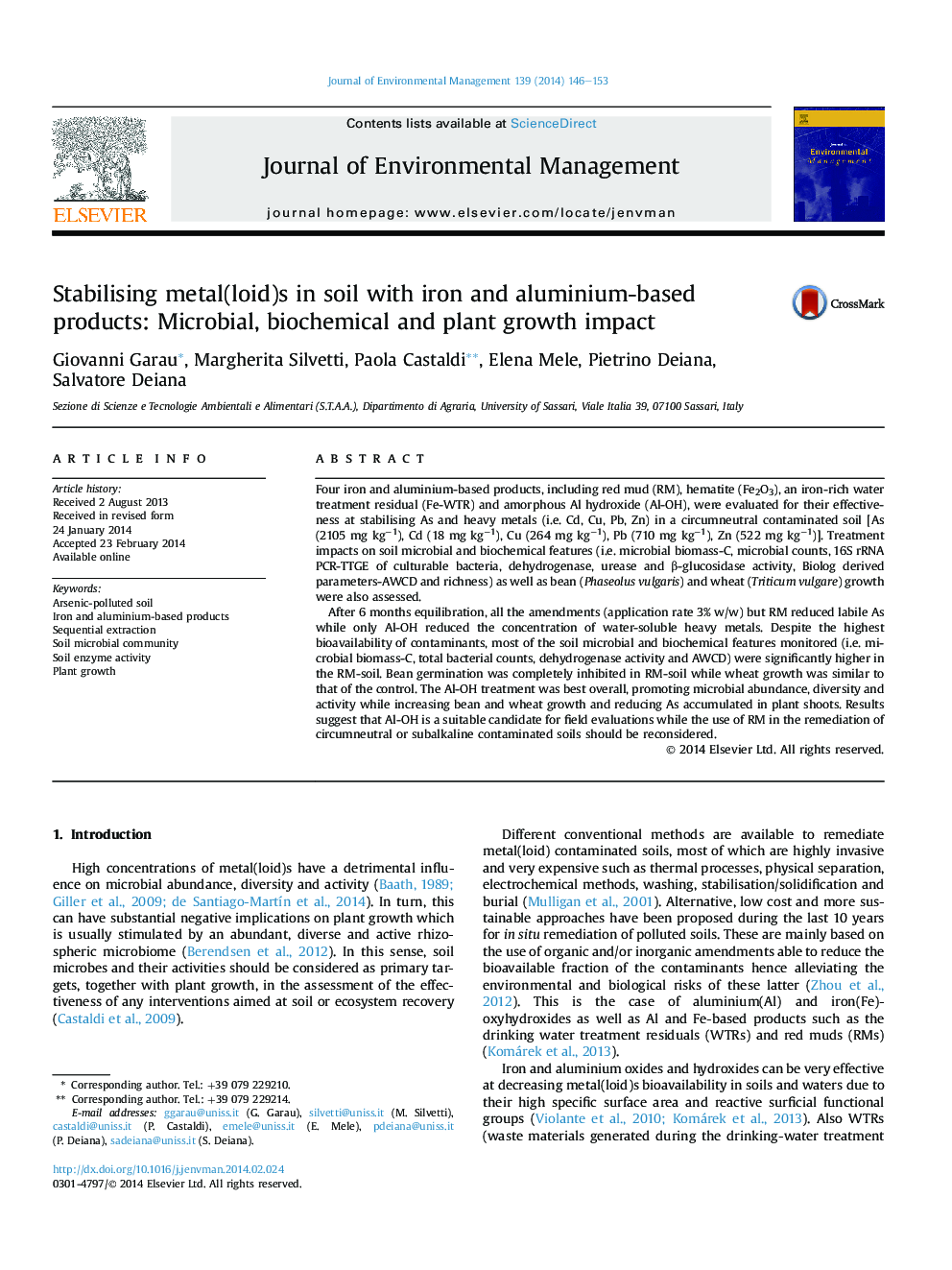| Article ID | Journal | Published Year | Pages | File Type |
|---|---|---|---|---|
| 7483954 | Journal of Environmental Management | 2014 | 8 Pages |
Abstract
After 6 months equilibration, all the amendments (application rate 3% w/w) but RM reduced labile As while only Al-OH reduced the concentration of water-soluble heavy metals. Despite the highest bioavailability of contaminants, most of the soil microbial and biochemical features monitored (i.e. microbial biomass-C, total bacterial counts, dehydrogenase activity and AWCD) were significantly higher in the RM-soil. Bean germination was completely inhibited in RM-soil while wheat growth was similar to that of the control. The Al-OH treatment was best overall, promoting microbial abundance, diversity and activity while increasing bean and wheat growth and reducing As accumulated in plant shoots. Results suggest that Al-OH is a suitable candidate for field evaluations while the use of RM in the remediation of circumneutral or subalkaline contaminated soils should be reconsidered.
Related Topics
Physical Sciences and Engineering
Energy
Renewable Energy, Sustainability and the Environment
Authors
Giovanni Garau, Margherita Silvetti, Paola Castaldi, Elena Mele, Pietrino Deiana, Salvatore Deiana,
